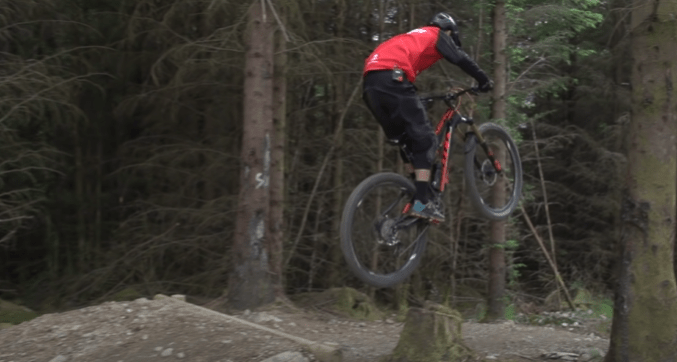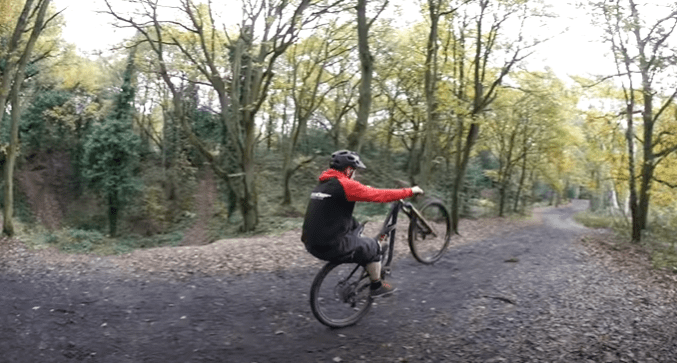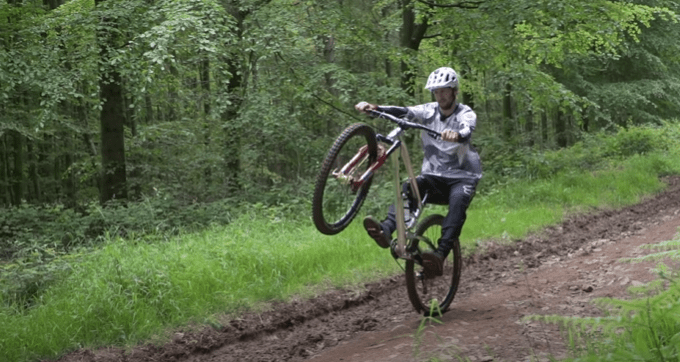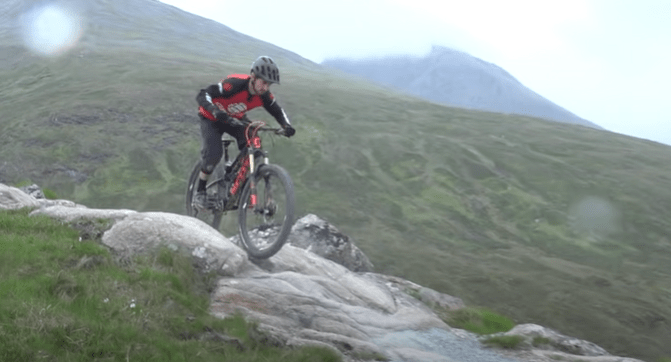

Mountain biking has undergone significant advancements since its inception in California during the 1970s. Originally, brave cyclists rode down treacherous roads on worn-out bicycles, known as “klunkerz” due to their distinct sound. Subsequently, the first mountain bikes emerged, resembling road bikes, but with bigger wheels.
With time, mountain bikes have transformed into high-performance off-road vehicles, capable of achieving impressive speeds on rough terrain.


Mountain bikes are broadly categorized into two groups: Hardtail and Full Suspension.
Hardtail bikes do not have rear suspension, making them more efficient in transferring pedaling power. They usually have front suspension.
On the other hand, Full Suspension bikes have both a suspension fork and shock absorber at the rear, making them more expensive due to their complex frames. These are preferred by All-Mountain bikers.
When it comes to mountain biking, there are three primary wheel sizes available, which are determined by their diameter.
For many years, 26” wheels were the standard on mountain bikes.
However, currently, the most common wheel sizes are between 27.5” and 29”.
The creation of 29” wheels is credited to Gary Fischer, a mountain biking pioneer, and later became popular with Cross Country riders. These wheels have the advantage of rolling over obstacles with greater ease and allowing for greater distance per pedal stroke. However, they are less maneuverable and have more wheel flex, which also results in increased weight.
In contrast, 27.5” wheels were introduced as an experimental intermediate option and have proven to be hugely successful among cyclists. These wheels offer better traction, faster speed, and easier handling compared to the other two sizes.
Trying out mountain biking can be an affordable experience by renting or borrowing a bike from a friend. By organizing some outings, you can decide if you enjoy it and which modality interests you the most.
For beginners, a hardtail mountain bike is the most economical option to get started. Another alternative is to purchase a second-hand bike or consider longer rentals. It is advisable to seek advice from an experienced mountain biker to help with the decision-making process.
While full-suspension bikes are ideal for all-mountain riding, they are more expensive. It is not necessary to invest in a high-end bike at the outset as you may not yet have the necessary skills to take full advantage of its capabilities.


Technical clothing is designed with materials that help regulate body temperature and absorb sweat during mountain biking.
Investing in a good pair of padded MTB shorts with a “chamois” pad can greatly improve comfort and allow for longer rides.
Choosing the right cycling shoe is also important, as it offers proper interaction with pedals and protection against obstacles on the trail.
Starting out, it is not necessary to spend a lot of money on gear, as more can be acquired later on. It is recommended to try different brands to find the best fit and comfort.
It is important to always wear a helmet while mountain biking, even during slow rides or on flat terrain.
Falls can occur at any speed, so wearing a helmet can greatly reduce the risk of head injuries. Additionally, accidents may not always be the rider’s fault and involve other individuals.
MTB helmets are specifically designed for off-road biking and offer more coverage and protection than road helmets. They often come with a visor for added protection from the sun and debris.
Cycling sunglasses are an important safety accessory that should be worn after the helmet. They protect the eyes from wind and dust, and are essential even in the winter months to prevent small particles or insects from getting into the eyes and causing harm.
Investing in a good pair of MTB gloves is essential for better grip and hand protection during impacts while riding.
As you progress and venture into more challenging terrain, it’s advisable to add knee and elbow pads for extra safety.
Protecting your knees and elbows with pads is essential to prevent injuries and fractures when mountain biking. Falls are inevitable, but with the right gear, you can minimize the damage. Investing in knee and elbow pads is relatively inexpensive, and it can save you from painful and annoying wounds.
As a beginner, it’s normal to feel overwhelmed on your first mountain biking outing. To make things easier, it’s best to plan your first route in a familiar area until you get used to your bike.
As you gain experience, you can start exploring new routes with varying durations and difficulty levels.


Before going on a mountain biking trip, it’s crucial to plan the route and take weather conditions into account. It’s also essential to inform someone about your plans, including the route and expected duration, in case of an emergency.
While riding, it’s important to keep your gaze up and focus on the path ahead to avoid accidents. Paying attention to small details such as gears or saddle height can distract you from spotting potential obstacles on the trail.
When riding on smooth roads, sitting back and pedaling is fine. But when navigating rough terrain with rocks or roots, it’s important to learn how to stand up on your pedals. To do this, keep your pedals and feet at the same height and lower your heels.
Remember to keep your feet heavy and your hands light on the handlebars. This helps you conserve energy and maintain a relaxed position. Avoid leaning too much on the handlebars as it can make it difficult to control the bike.
Stay calm, breathe, and move slowly. Riding on a mountain bike can be stressful, especially for beginners, so it’s important to take it step by step and prioritize safety.
There are numerous GPS bike computers available in the market, ranging from basic to advanced levels. They offer features for tracking distance, speed, and navigation. Some advanced GPS bike computers also come with maps of the terrain and surroundings.
You can also use a bike computer to navigate a route and view maps of the terrain and surroundings.
Alternatively, you can download the Strava app on your mobile device to track your progress, store data, save routes, and share your results with friends.
As you gain confidence in mountain biking, you may want to ride in low light or at dusk. This is a great way to keep training during the winter months, but it also comes with risks.
To mitigate these risks, it is essential to have bicycle lights. Without proper visibility, you won’t be able to see where you’re going!
Remember to mount a headlight on your handlebars and a red rear-facing light to be visible to other vehicles and bicycles.
If you plan on riding at night, start on familiar roads. Mountain biking in the dark can be challenging, but it can also be very exciting!
